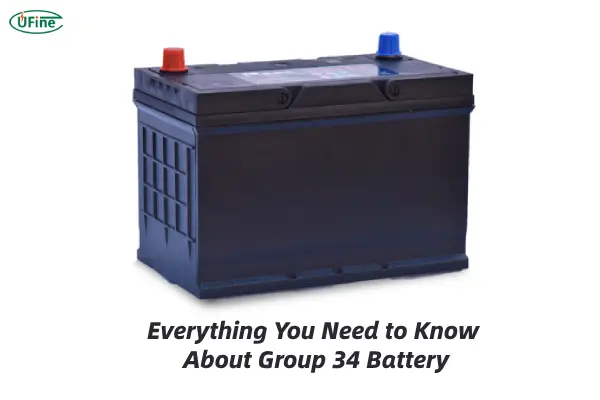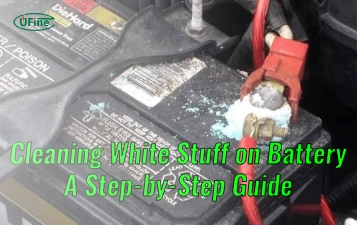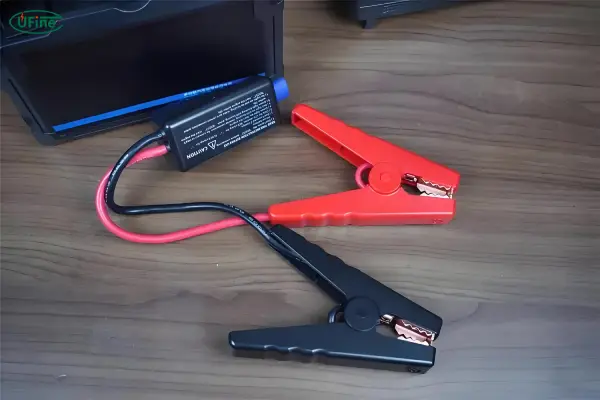When it comes to powering your vehicle or equipment, the battery you choose can make a significant difference. One option that’s becoming increasingly popular is the Group 34 battery. Known for its balance of power, reliability, and versatility, this battery size is commonly used in trucks, SUVs, and even marine applications. But what exactly is a Group 34 battery, and is it worth your investment?
In this article, we’ll dive into everything you need to know about the Group 34 battery—its key features, advantages, and how to choose the best one for your needs. Whether you’re upgrading your vehicle’s battery or exploring options for a new purchase, understanding the finer details will help you make an informed decision. And we’ll even throw in some real-world examples to help you see how this battery can benefit your daily life.
Part 1. Understanding group 34 battery

So, what exactly is a Group 34 battery? The term “Group 34” refers to the physical size and specifications of the battery, as standardized by the Battery Council International (BCI). These batteries have a specific dimension and power output that make them suitable for particular types of vehicles and applications.
The “34” in Group 34 doesn’t indicate voltage or capacity; instead, it defines the size of the battery case. In terms of dimensions, a typical Group 34 battery measures around 10.25 inches long, 6.8125 inches wide, and 7.875 inches high. This size is often ideal for vehicles requiring a bit more power but with space limitations.
Advantages:
- Powerful Performance: Group 34 batteries offer high cranking power, making them ideal for vehicles with heavy electrical demands like trucks or RVs.
- Durability: These batteries are known for their resilience, able to withstand vibrations and harsh conditions.
- Versatility: You can use Group 34 batteries in a variety of vehicles, including SUVs, boats, and off-road vehicles.
Disadvantages:
- Weight: Depending on the type, these batteries can be quite heavy, which can make installation challenging.
- Cost: Group 34 batteries tend to be more expensive compared to smaller, less powerful batteries, especially if you choose a premium type like AGM or lithium.
Part 2. Voltage
Voltage is an essential factor when choosing a battery. The Group 34 battery typically operates at a standard voltage of 12 volts. This is sufficient to power most vehicles, providing enough energy to start the engine, power the lights, and run various accessories like the radio or air conditioning system.
In real-life situations, maintaining consistent voltage is critical for ensuring that your vehicle runs smoothly. For instance, if you have an SUV equipped with numerous electronic features like a GPS, entertainment systems, and power outlets, a Group 34 battery can ensure that everything stays powered without a hitch. Whether you’re on a road trip or just running daily errands, you need a reliable battery to keep everything running without interruptions.
Part 3. Capacity
When it comes to battery capacity, the Group 34 battery generally offers a capacity range of 50Ah to 75Ah (amp-hours), which tells you how much energy the battery can store and deliver over time. The higher the capacity, the longer your battery can provide power without needing a recharge.
Another key measurement is Cold Cranking Amps (CCA), which indicates how well the battery can start an engine in cold conditions. For Group 34 batteries, the CCA ranges from 750 to 950, making them ideal for starting engines in frigid weather. This is especially useful if you live in a region with cold winters—imagine trying to start your car on a freezing morning, only to find the battery can’t handle the temperature drop. With a high CCA, you can count on your vehicle starting reliably, even in challenging conditions.
Part 4. Size
Size matters when it comes to fitting a battery into your vehicle. The standard size for a Group 34 battery is 10.25 inches in length, 6.8125 inches in width, and 7.875 inches in height. These dimensions are crucial because they determine whether the battery will fit into your vehicle’s battery tray.
If you’re replacing an old battery, it’s important to check that the new Group 34 battery matches these dimensions to avoid installation issues. For example, a mechanic who recently upgraded his pickup truck’s battery found that the Group 34 fit perfectly, ensuring both optimal performance and a secure fit in the battery compartment.
Part 5. Types
Group 34 batteries come in various chemical compositions, and each type has its own set of pros and cons. Let’s explore the main types:
- Flooded Lead-Acid: The most common and affordable type. These batteries require periodic maintenance, such as adding distilled water to maintain electrolyte levels.
- AGM (Absorbent Glass Mat): AGM batteries are sealed and maintenance-free. They offer better vibration resistance and have a longer lifespan compared to flooded batteries. For people who use off-road vehicles or boats, the AGM version of Group 34 provides a more durable and hassle-free option.
- Gel Cell: Similar to AGM, but the electrolyte is in gel form, offering even more protection from leakage and vibration.
- Lithium-Ion: The most expensive option, lithium-ion batteries are lightweight and last significantly longer. They are ideal for people looking for high performance and long-term savings.
AGM VS Lithium VS Lead-Acid Battery: Comprehensive Comparison
Part 6. Weight
The weight of a Group 34 battery can range from 40 to 50 pounds for lead-acid and AGM types, whereas lithium-ion versions tend to be much lighter, around 20 to 30 pounds. This difference in weight can be a crucial factor, especially for individuals who need to regularly remove and reinstall the battery.
A customer who switched from a flooded lead-acid battery to a lithium-ion Group 34 for his RV noted the significant weight reduction, which made it easier to handle during maintenance and transportation. If you plan on frequently moving or replacing your battery, a lighter option might save you both effort and time.
Part 7. Price
Price varies based on the type of Group 34 battery you choose:
- Flooded lead-acid: $100 to $150
- AGM: $150 to $250
- Gel Cell: $200 to $300
- Lithium-Ion: $300 to $500+
While the upfront cost for lithium-ion or AGM batteries might be higher, the long-term savings can be significant due to their extended lifespan and reduced maintenance needs. If you’re looking for a reliable long-term investment, it might be worth considering these premium options.
Part 8. Famous brands
Several trusted brands manufacture high-quality Group 34 batteries. Here are five of the most well-known ones:
- Optima: Offers top-tier AGM batteries known for their durability and reliable performance.
- Odyssey: Known for producing high-performance batteries with excellent longevity.
- DieHard: Provides a range of lead-acid and AGM batteries with competitive pricing.
- Exide: Offers reliable flooded lead-acid batteries, ideal for cost-conscious buyers.
- NorthStar: Specializes in premium AGM batteries with advanced technology and long lifespans.
Part 9. Applications
Group 34 batteries are used in a wide range of applications due to their versatility and power. Common uses include:
- Cars and SUVs: Ideal for vehicles with high electrical demands, such as SUVs equipped with multiple electronics.
- Marine Vehicles: Great for boats and marine applications where consistent power and resistance to vibrations are essential.
- RVs and Campers: These batteries can power various appliances and electronics for extended periods.
- Backup Power Systems: Used in backup power systems for homes or businesses, providing reliable energy during outages.
Part 10. How do I know my battery group size?
Determining your battery’s group size is easy. You can check your owner’s manual, which usually lists the recommended battery size. Another method is to look at the label on your current battery or measure its dimensions. Ensuring you choose the right group size is critical to avoid installation issues and ensure your battery performs optimally.
Part 11. How long can group 34 battery last?
The lifespan of a Group 34 battery largely depends on the type you choose and how well you maintain it. On average:
- Flooded lead-acid batteries last around 3 to 5 years with proper care.
- AGM batteries can last up to 5 to 7 years, especially when regularly charged and stored in stable conditions.
- Lithium-ion batteries, although more expensive, can last up to 10 years or longer, making them a great long-term investment.
Regular maintenance, proper charging, and avoiding extreme temperatures can extend the life of your battery, saving you money in the long run.
Part 12. Conclusion
Choosing a Group 34 battery can be a smart decision if you need a battery with strong performance, durability, and versatility. Whether you’re looking to power a truck, SUV, boat, or RV, this battery offers reliable performance, even in harsh conditions. With options ranging from lead-acid to lithium-ion, there’s a Group 34 battery to meet nearly every need and budget.
By carefully considering factors like voltage, capacity, and type, you can find the perfect battery for your vehicle or equipment. In the end, investing in a high-quality Group 34 battery can save you time, effort, and money—while ensuring you never have to worry about a dead battery when you need it most.
Related Tags:
More Articles

White Stuff on Battery Terminals: A Step-by-Step Cleaning and Maintenance Guide
White stuff on battery terminals is corrosion. Learn how to clean it safely, prevent damage, and keep your battery running strong with simple steps.
Understanding How Glass Mat Batteries Work: Technology, Benefits, and Limitations
Glass mat batteries power cars, RVs, and solar systems. Learn how they work, their benefits, and what to consider before choosing one.
A Buyer’s Guide for AA Size Lithium Battery
Discover the power of AA size lithium batteries—types, voltage, capacity, and more! Learn how to choose the best one for your needs. Read now!
Li-Ion Battery Prices – Where to Buy Cheap & Safe
Discover li-ion cell prices, key market factors, and how to find affordable custom batteries from top suppliers like Ufine Battery.
How Long Does a 2200mAh Battery Last?
Discover everything about 2200mAh batteries—types, charging time, lifespan, and whether it’s enough for your device.




